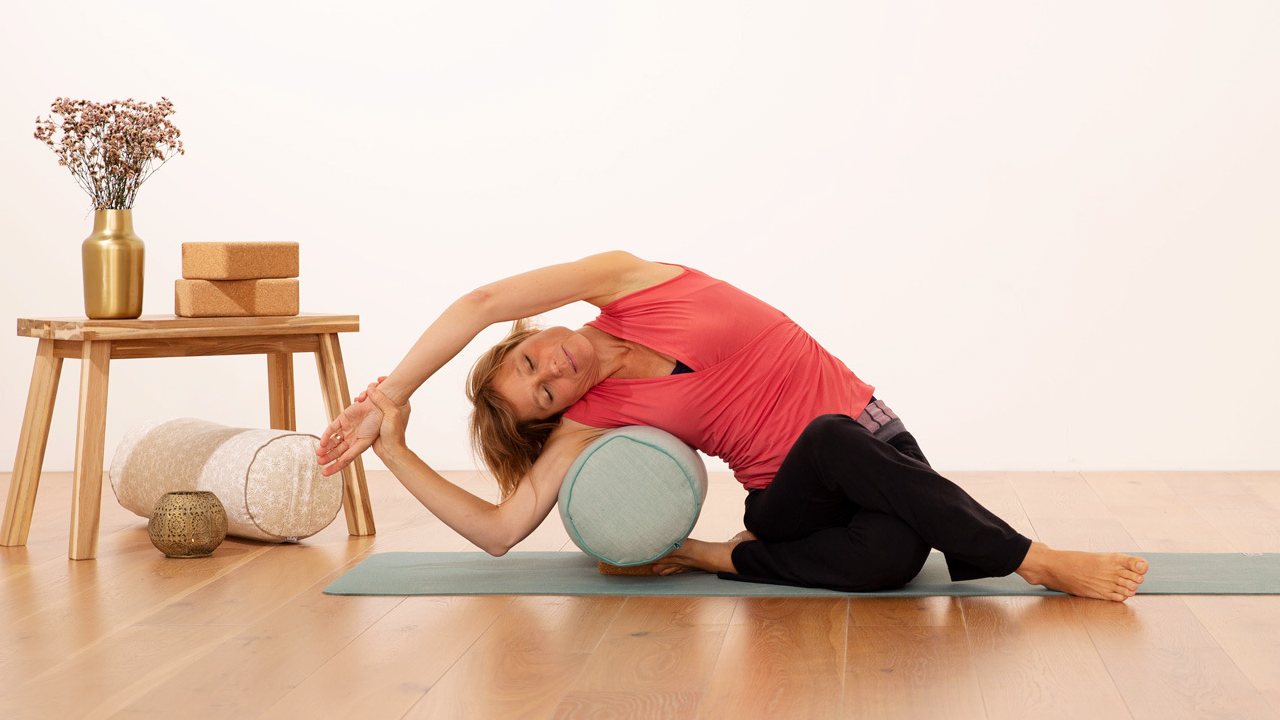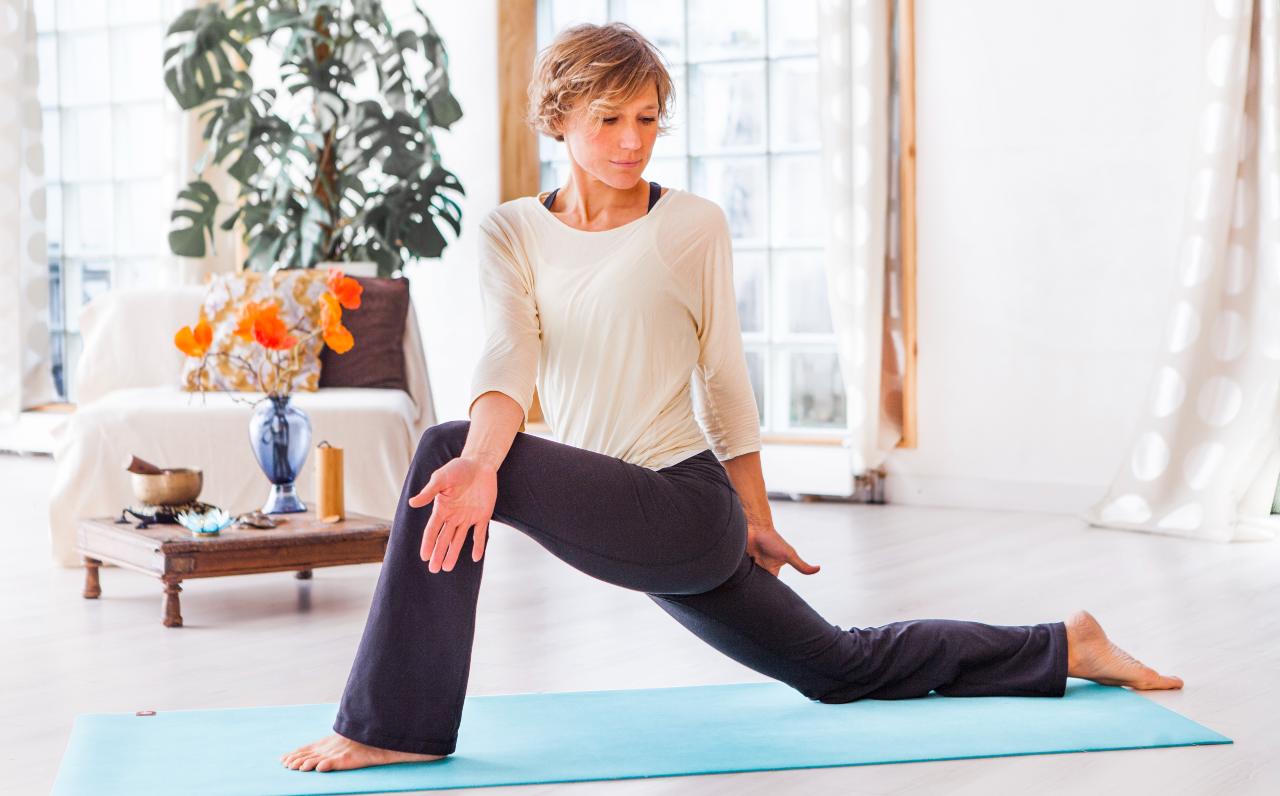In this first of five in-depth articles exploring Organs and Meridians in Traditional Chinese Medicine (TCM), we will focus on the element of fire – the element associated with Summer. We will explore the fire organ meridian lines, common acupoints for heart, small intestine, pericardium and San Jiao – the three chambers that are often equated to the lymphatic drainage system. We also look at three ‘fire’ Yin postures.
The Five Elements
You may have first heard about the five elements – Earth, Water, Fire, Air and Ether – through your exploration of the first five chakras. The rising popularity of Yin Yoga means that many of us are now becoming more familiar with the meridians of Traditional Chinese Medicine, plus its five elements.
The five elements in Traditional Chinese Medicine and culture are Water, Wood, Fire, Earth and Metal. Each element corresponds with different seasons, emotions, biological functions, organs, directions of energy and meridians (energetic channels).
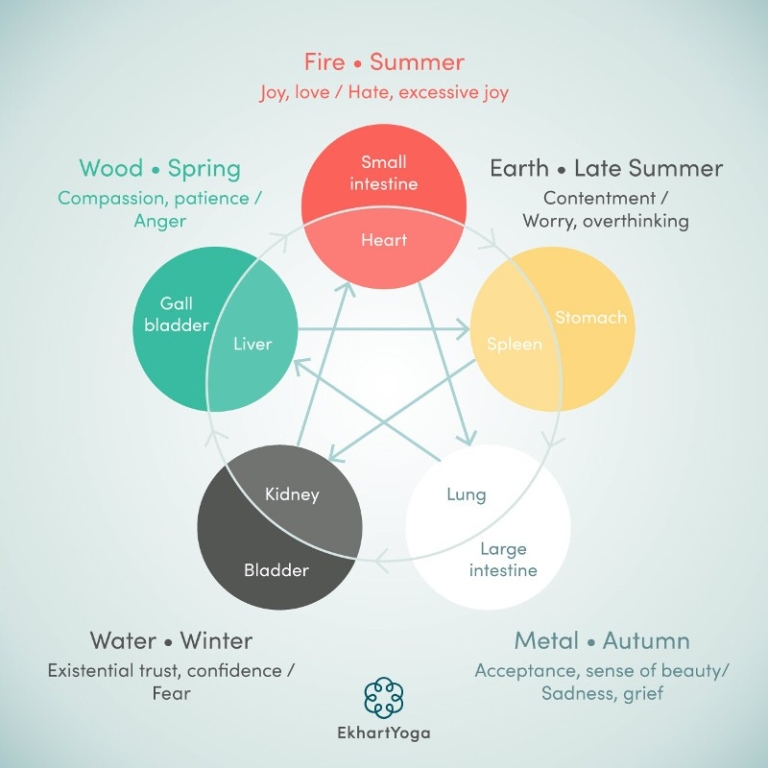
Just as with everything in nature the elements are interconnected. Each element supports and gives space to the next in the cycle – this is known as the Feeding cycle (see the outer arrows in the diagram). The elements also keep each other in check so they don’t get out of balance. For example, Water energy acts as a restraining energy against too much Fiery heat in Summer (the inner crossing arrows in the diagram).
Chinese Medicine and our Organs
Five Element Theory (or wu xing “five phases”) in Chinese Medicine explores the five agents/elements of change. The five elements of fire, earth, metal, water, and wood are represented in the body through our organs. These organs are paired (yin/yang) in the Zang-Fu Theory. Yin/zang organs have the quality of storing energy and nutrients for the body. Yang/fu organs push nutrients and waste through and out of the body.
There are four fire organs:
- Heart (yin)
- Small intestine (yang)
- Pericardium (yin)
- San Jiao (also known as the triple warmer/triple burner/triple heater/triple energizer of upper, middle and lower torso/yang).
All other elements have two organs each:
- Water organs are Kidneys and Urinary bladder
- Wood organs are Liver and Gallbladder
- Metal organs are Lungs and Large intestine
- Earth organs are Stomach and Spleen (also included here is the pancreas).
Chinese body clock
The Chinese body clock is a 24-hour body clock which illustrates two-hour intervals where certain organs are at their strongest/highest or weakest/lowest functioning. In the Chinese body clock we see the fire element appearing twice. It is the only element to do so.
Heart (11am-1pm) and Small Intestine (1-3pm) are called Absolute Fire (the bright light and heat of the noon sun). Pericardium (7-9pm and San Jiao (9-11pm) are Supplemental Fire (the subtle light and warmth of the evening hearth in the home).
Qualities of the Fire Element
The light/hot/active/expansive qualities of Fire are very yang (compared to the dark/cool/receptive/downward qualities of water which is very yin). The season of fire is summer and the emotions are joy, love and passion. The sound is one of laughter and the colour is red. We could equate excessive fire with how we might feel after too many summer parties (too much sun and too much fun!) When we think of deficient fire we think of a summer that is cloudy and overcast. That is – too much rain and not enough sun; conditions where the garden doesn’t necessary yield all it can. Balanced fire is a perfect mix of yin and yang. Sun and clouds, activities and rest, fun gatherings with loved ones as well as nap times on a hammock (with a good book open across your chest).
Fire Element as movement of Qi
Fire is the movement of qi that is expansive. When the natural movement of qi is excessive (too much yang in this already very yang element) it presents itself as hysteria or mania. If the expansive movement of fire gets stuck or disrupted we may experience or express it as joylessness, cruelty, and hatred. When our fire is in balance (not too much yin or yang), we are able to intimately be in touch with and share our innermost joy, our dharma, our purpose here on this earth.
Organ Meridians and Occupants
In yoga we work with freeing the flow of prana as it courses through our nadi channels (where two or more nadis intersect, touch or wrap around is a chakra). In TCM we work with freeing the flow of qi as it courses though our meridian channels. Each meridian has a varying number of acupoints. Acupoints are areas along the meridian where qi can stagnate. We can free this stagnation by stimulating these by acupressure or acupuncture.
The twelve principle organ meridians and the yin yoga postures that will stimulate free passageway of qi in these twelve are what we are focusing on in this series.
Heart Meridian: 9 Acupoints
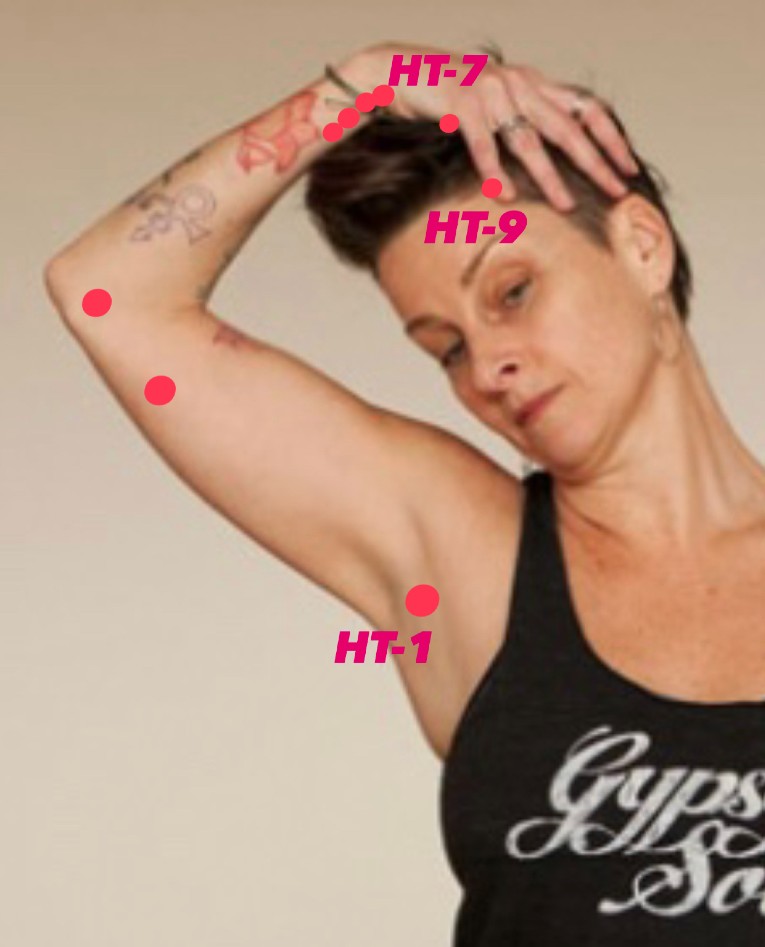
The heart meridian begins with acupoint HT-1 in the center of the armpit. It runs down the bottom of the inner arm to one the pointy parts of elbow (close to elbow crease). It then finds the bottom of the inner arm, has four points on the ulnar/pinky side of the wrist, and ends with HT-9 at the inner tip of the pinky fingernail.
Most heart points are utilized for treating chest pain, heart palpitations, high blood pressure and anxiety. The most common ones are HT-3, HT-5, HT-7 and HT-8. Each organ meridian has a Source Point which sources the primordial qi of that particular organ. HT-7 is the source point of the heart meridian (or “Spirit Door”) and is useful for calming anxiety).
Small Intestine Meridian: 19 Acupoints
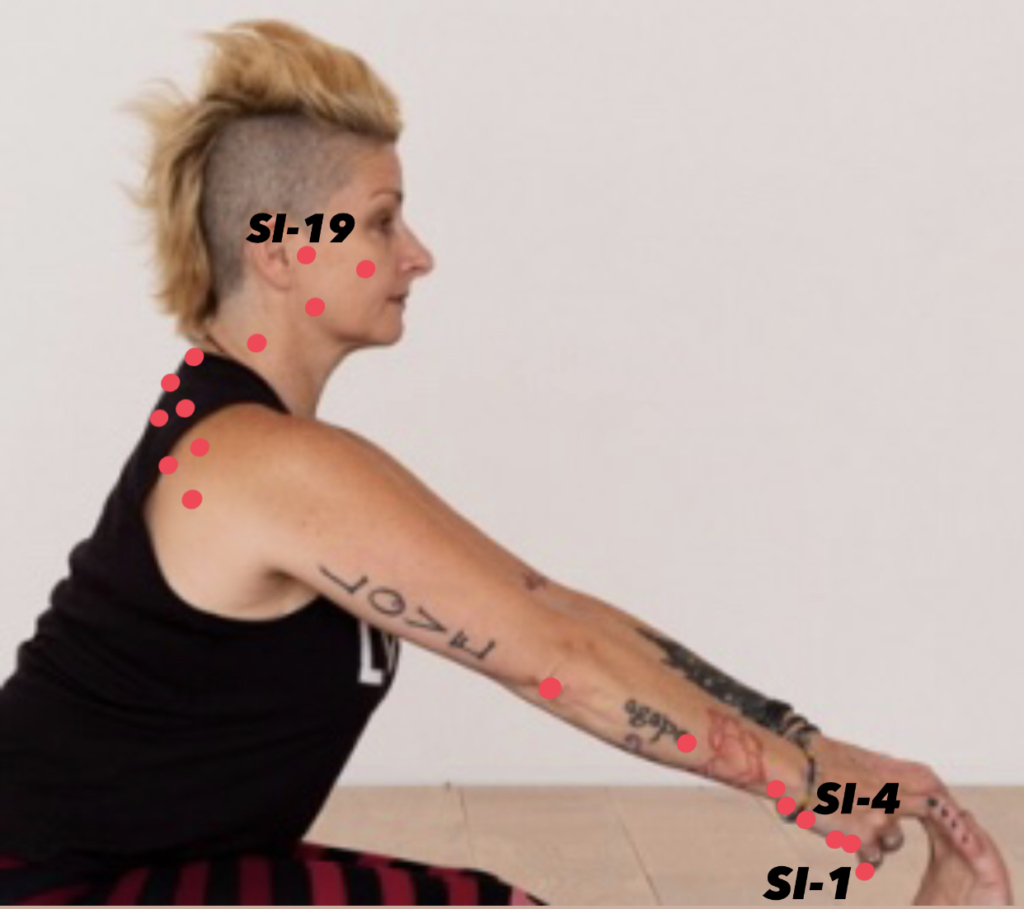
There are 19 acupoints in the small intestine meridian. SI-1 begins on the outer pinky fingernail and the line runs up the outer hand, wrist and arm to the outer pointy part of the elbow. It skips the back of the arm and heads right for the scapula (where it zigzags with 5 shoulder blade points).
Then, from the back of the neck (SI-15 sits at that bony protrusion where C7 vertebra meets T1) it travels up the side of neck, jaw, cheekbone to end at SI-19 (the front of the ear).
Small intestine points treat pain – everything from lower back pain to neck, jaw, TMJ and toothache pain. Headaches too! SI-4 (“Wrist Bone”) is the source point for the small intestine meridian and is great for relieving these pains.
Pericardium: 9 Acupoints
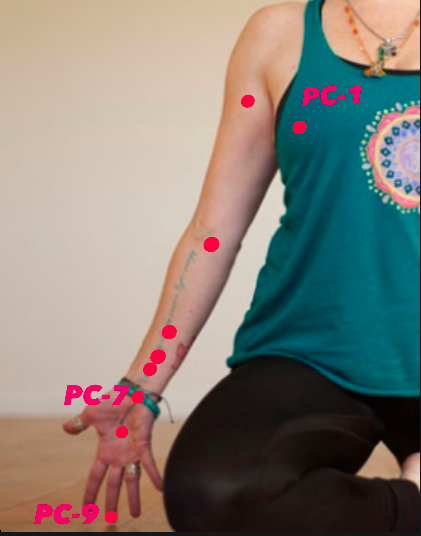
There are 9 acupoints in the pericardium meridian. PC-1 begins just lateral to the mid-chest/nipple area. The line then ascends up to the front crease of armpit before descending down the inner arm, elbow, forearm to the center of the palm. It ends with PC-9 at the end of the middle finger.
We use most of the pericardium acupoints to clear heat, relieve chest pain, calm the mind, and promote blood circulation. We use the source point – PC-7 “Great Mound” – to treat cardiac pain, cardiac palpitations, chest pain and manic psychosis.
San Jiao/Triple Burner/Triple Warmer: 23 Acupoints
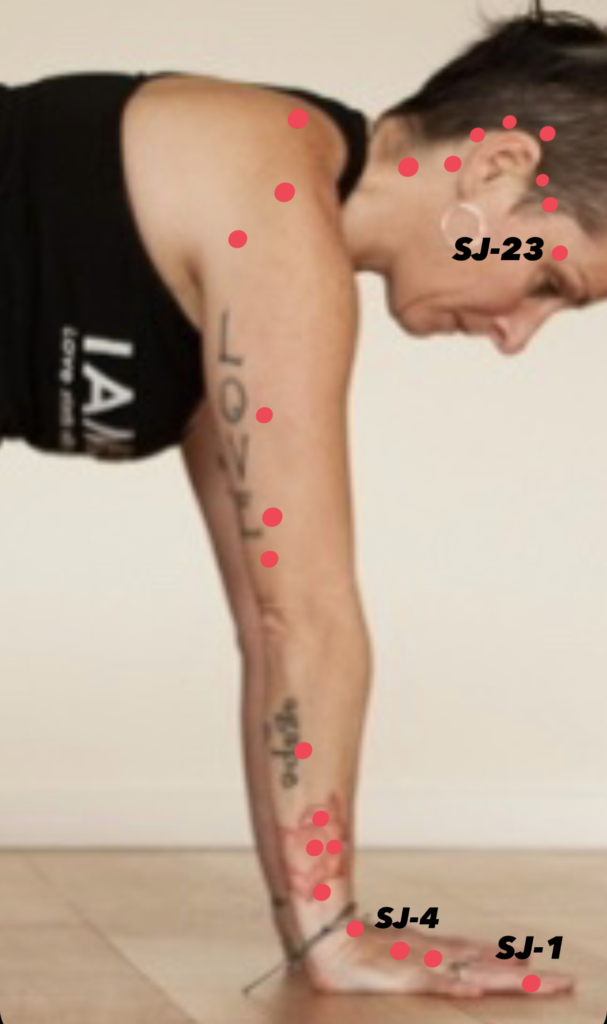
There are 23 points on the San Jiao meridian. San Jiao is also called the triple warmer/triple burner/triple heater/triple energizer. Beginning at the ring/4th fingernail, this meridian travels up the back of the hand with one point in the back of the wrist and five points in the forearm. It skips the elbow before moving into the back of the upper arm, back of the shoulder joint, and back of the neck to the side of the neck. It then traces the back and top of the ear and the temple before ending with SJ-23 at the outer eyebrow.
Most San Jiao points move and remove damp-heat from the three chambers of the body. (Damp-heat in the upper chamber leads to sore throat and earache. In the middle chamber it leads to belching and nausea. In the lower chamber – dark urine and smelly diarrhoea). The source point of the San Jiao meridian is SJ-4 “Yang Pond” is great for treating damp-heat in the three burners/chambers.
Fire Element Meridians in Yin Yoga Postures
Open Wing
Since all four fire organ meridians are found in the arms, Open Wing pose* is a great pose to access, stimulate and therefore balance them. With its emphasis on the armpit, inner arm and pinky (little finger) we can tap into the joy of the heart. The emphasis on the pinky finger, shoulder blade and the side of neck for the small intestine helps us to access the power of sorting through information and choosing what is right for the heart’s joy.
With emphasis on the ring finger, side of the neck, ear and temple for San Jiao we can let go of anything sluggish or stagnant. And finally, with emphasis on the chest, middle of palm and middle finger for pericardium, this posture can help cultivate awareness and gratitude for this protector of the heart. (Pericardium only lets through what best serves the heart).
*For an in-depth tutorial on Open Wing pose, check out José de Groot’s YouTube class.
Seated Side Lying/Seated Bananasana
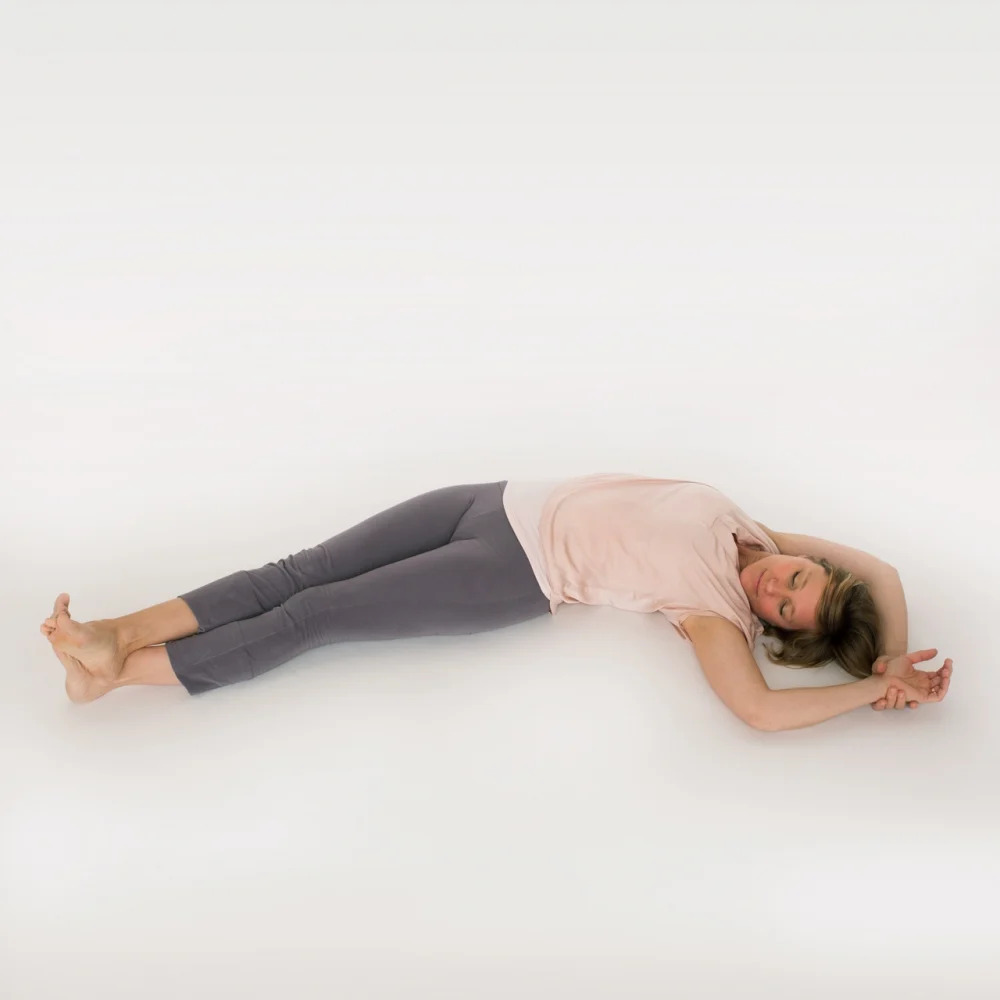
This seated variation of a banana-asana with the props underneath the armpit (HT-1, PC-1-2) gives a gentle pressure on the bottom elbow (HT-3 and SI-8), a tricep stretch (HT-2, SJ-10-12), a gentle drag/massage of the top forearm (SJ-5-9, PC-4-6)) and wrist (HT-4-7, SI-5-6, SJ-4, PC-7)) with the bottom palm (PC-8). It also ‘drapes’ and stretches the side of the neck (SI-16 and SJ-16) into the ear/temple (SJ-17-22). These are fantastic are for all of the fire element meridians. Just one look at this posture makes the heart joyful and happy, making the sound of the fire element – Hawwwww.
Melting Heart (Puppy Pose)
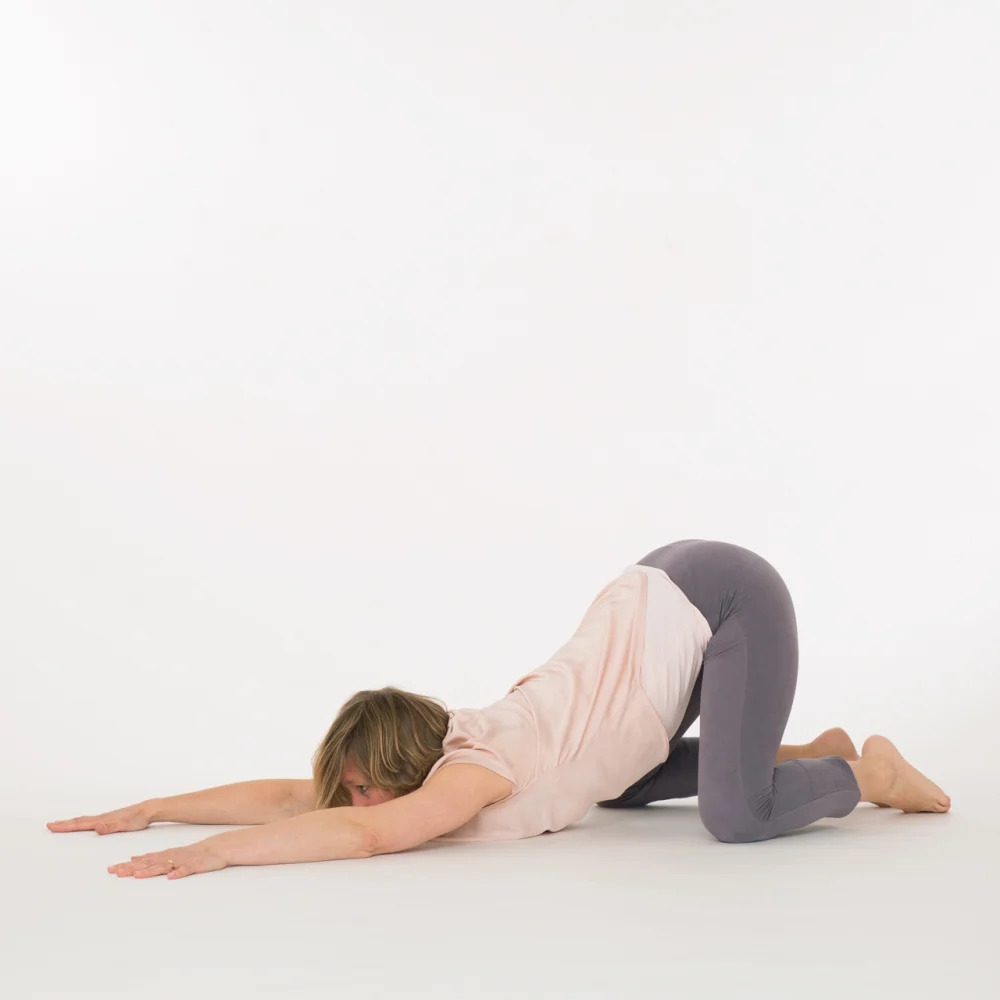
The names of this posture say it all! Just as puppies melt away any unkindness or joylessness so does this melting heart/puppy pose! Awareness of armpit to pinky is for accessing heart meridian and awareness of chest to middle finger is for accessing the pericardium meridian.
The Five Elements in Three Ancient Healing Systems
In the three ancient healing systems of Yoga, Ayurveda and Chinese Medicine the emphasis is always on harmony and balance. Just as in nature, when balanced in our mind and body, the five elements will always support and nourish each other. When they are imbalanced, we can rely on them to support and transform the other elements too.
When the fire element is in excess we can utilize the yin qualities of earth and water to calm and cool. But when the fire element is deficient we can utilize the quality of air or wood to stir and move (fan our flames). And always, we can rely on the active, expansive, yang qualities of our inner fire to stimulate and balance other elements when necessary.
Try our Yin Yoga and the Five Elements program
A 5 week program of Yin yoga practices based on the Five Elements and Meridian theory, designed to support and nourish your whole body and mind.
Related reads:
- How to support your health with Yin Yoga and the 5 Elements
- Introduction to Meridian Theory and Yin Yoga
- For an in-depth training you can study Yin Yoga and Meridians with José de Groot on the EkhartYoga Academy

